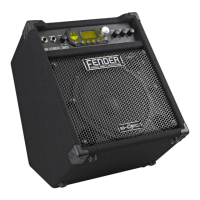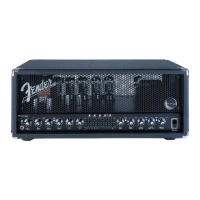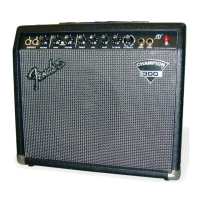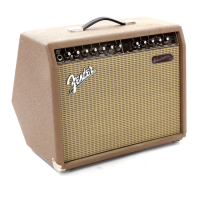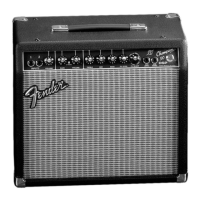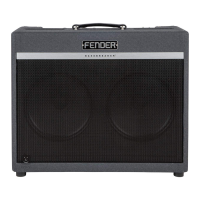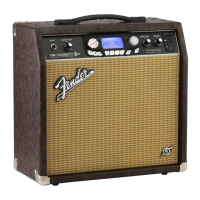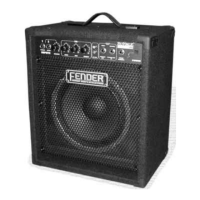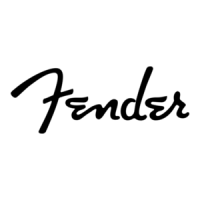
Do you have a question about the Fender 3014 POWER AMPLIFIER and is the answer not in the manual?
| Frequency Response | 20Hz - 20kHz |
|---|---|
| Total Harmonic Distortion | <0.1% |
| Dimensions | 19" x 3.5" x 12" |
| Inputs | 1/4" |
| Outputs | 1/4" |
| Impedance | 4/8 ohms |
Overview of Fender 3014, 3016, 3018 integrated mixer/amplifiers for easy setup and versatile operation.
Signal flow block diagram illustrating the internal circuitry for the Fender 3014 model.
Detailed technical specifications including noise, distortion, frequency response, and input/output levels.
Description of 1/4" phone jacks and XLR connectors for audio input.
Explanation of individual channel controls like Level, Tone, Monitor, and Effects/Reverb.
Controls for the main mix, monitor mix, reverb, effects send, and graphic equalizer.
Details on the various input and output jacks for signal routing and external connections.
Explanation of the front panel Power LED and Limit LED indicators.
Information on speaker output jacks, power handling, and impedance considerations.
Location and operation of the AC power switch.
Location and procedure for checking and replacing the fuse.
Note on the heatsink's normal operating temperature and airflow.
Recommended initial settings for controls to achieve a satisfactory sound mix quickly.
Guide on identifying and reducing acoustic feedback using the graphic equalizer.
Guidelines for selecting and using appropriate microphone and speaker cables.
Instructions on using input pads to prevent distortion from high signal levels.
Guidelines and suggestions for patching external signal processing devices and configurations.
Recommendations for maintaining the mixer and information on contacting service personnel.


